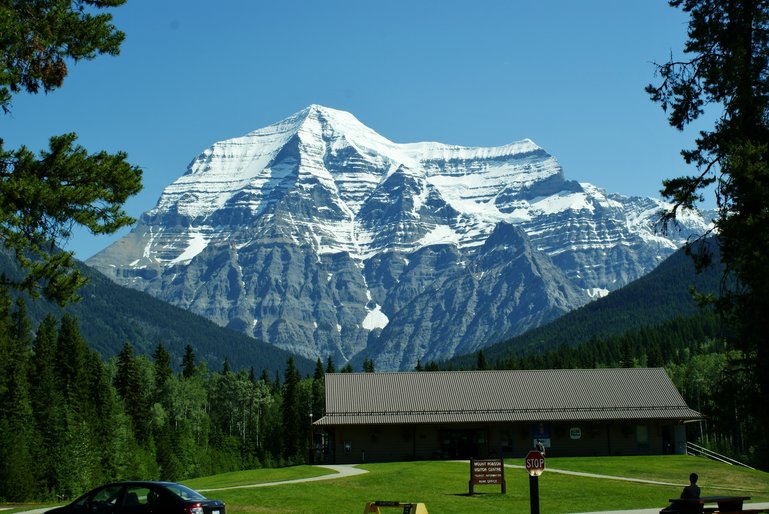The Rocky Mountains, often simply referred to as the Rockies, are one of the most iconic mountain ranges in North America, known for their breathtaking landscapes, diverse ecosystems, and rich history. Stretching over 3,000 miles (4,800 kilometers) from northernmost British Columbia in Canada down to New Mexico in the southwestern United States, the Rockies serve as a natural spine running through the continent. This vast and rugged range is not only a geographical marvel but also a symbol of the wild beauty of the American and Canadian wilderness. The Rockies are home to some of the most stunning national parks, vibrant wildlife, and outdoor recreational opportunities in the world, attracting millions of visitors each year.
Beyond their physical presence, the Rockies have played a significant role in the cultural and historical development of North America. The mountains were a formidable barrier to early European explorers and settlers, shaping the patterns of migration and trade. Today, the Rockies continue to influence the region’s economy, culture, and lifestyle, serving as a hub for tourism, outdoor sports, and conservation efforts. In this exploration, we will delve deeper into the geography of the Rocky Mountains, tracing their path through North America and highlighting the key regions and attractions that define this magnificent range.
Location Information
The Rocky Mountains stretch through western North America, spanning from the Canadian province of British Columbia to the U.S. states of Montana, Wyoming, Colorado, New Mexico, and Utah. This vast range traverses diverse landscapes, offering breathtaking views and a wide variety of ecosystems.
In Canada, the Rockies begin in British Columbia and extend eastward into Alberta, forming a natural barrier between these two provinces. The Canadian Rockies are home to some of the most stunning national parks, including Banff and Jasper, which attract millions of visitors each year.
In the United States, the Rocky Mountains continue their journey southward. They pass through several states, creating a dramatic backdrop for cities and natural landmarks:
Montana: The Rockies in Montana are characterized by rugged terrain and pristine wilderness areas. The city of Bozeman and the world-renowned Glacier National Park are located here.
Wyoming: Wyoming is home to some of the most iconic sections of the Rockies, including the Grand Teton National Park and parts of Yellowstone National Park, the first national park in the world.
Colorado: Colorado is synonymous with the Rocky Mountains, as the range bisects the state. The city of Denver lies on the eastern edge of the Rockies, while the famous Rocky Mountain National Park is a major attraction in the northern part of the state.
New Mexico: The southernmost reaches of the Rockies extend into New Mexico, where they are known as the Sangre de Cristo Mountains. The city of Santa Fe lies at the foothills of this range.
Utah: Although Utah is more commonly associated with the Wasatch Range, the eastern edge of the Rockies, known as the Uinta Mountains, extends into northeastern Utah.
SEE ALSO: Wrist Pain When Mountain Biking
Geological Significance and Formation
The Rocky Mountains are the result of a series of geological processes that began over 170 million years ago during the Laramide orogeny. This period of mountain building was caused by the collision of tectonic plates, which forced the earth’s crust to buckle and fold, creating the towering peaks we see today. The Rockies are primarily composed of sedimentary rock, but they also contain significant areas of metamorphic and igneous rock, revealing their complex geological history.
Key Features of the Rocky Mountains
The Rocky Mountains are home to some of the highest peaks in North America, with Mount Elbert in Colorado standing as the tallest at 14,440 feet (4,401 meters). Other notable peaks include Mount Robson in British Columbia, the highest peak in the Canadian Rockies, and Grand Teton in Wyoming, a striking granite peak in the Teton Range.
National Parks: The Rockies are dotted with numerous national parks, each offering unique landscapes and opportunities for outdoor recreation. Rocky Mountain National Park in Colorado is famous for its alpine lakes and wildlife, while Banff National Park in Alberta is known for its stunning glacial lakes and mountain scenery.
Hiking Trails: The Rockies are a hiker’s paradise, with countless trails ranging from easy walks to challenging backcountry routes. The Continental Divide Trail is a long-distance trail that follows the spine of the Rockies from Canada to Mexico, offering intrepid hikers an unparalleled adventure.
Conclusion
The Rocky Mountains stand as one of the most majestic and influential mountain ranges in North America, spanning two countries and multiple states and provinces, each offering its own unique slice of natural beauty and outdoor adventure. From the snow-capped peaks of British Columbi

